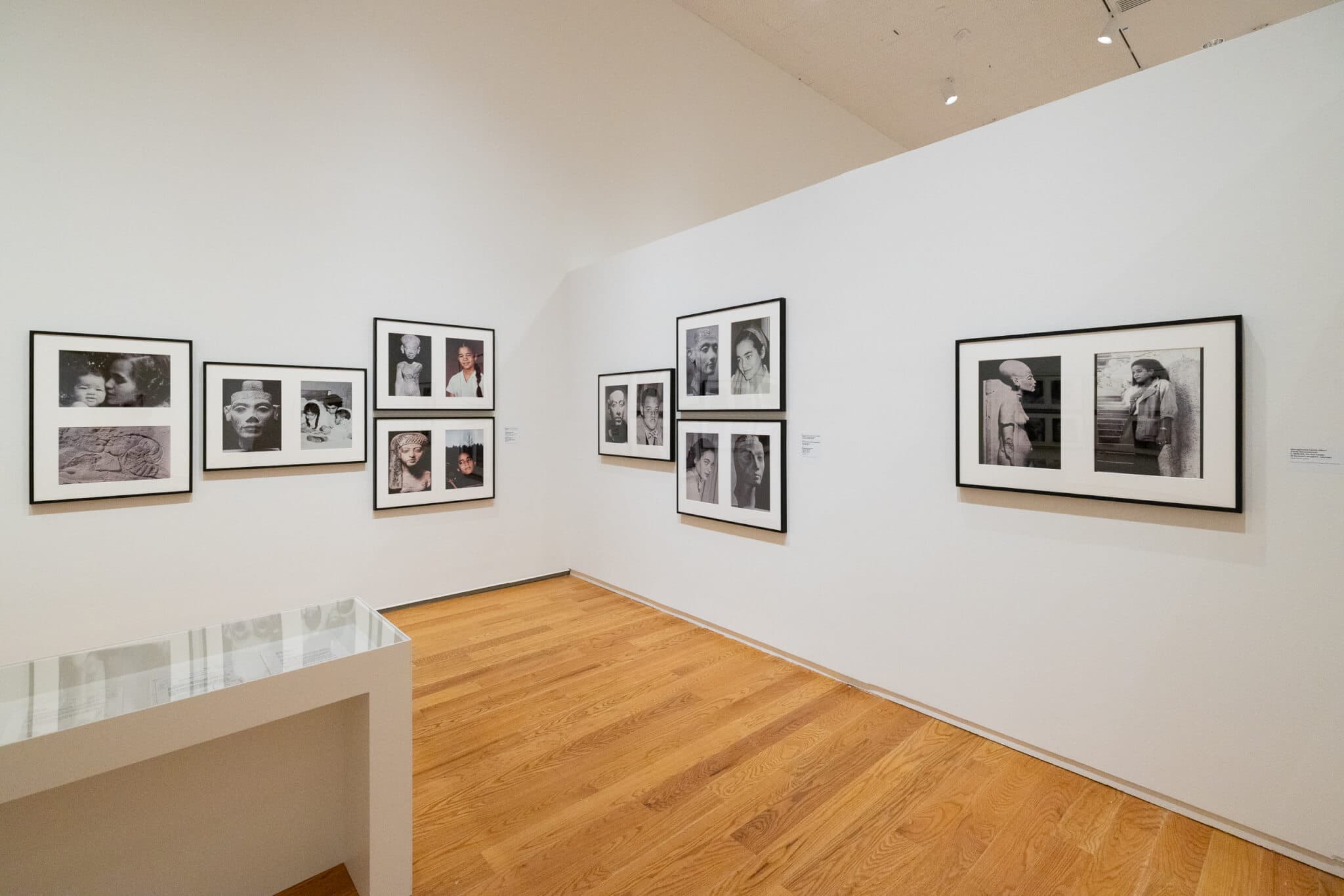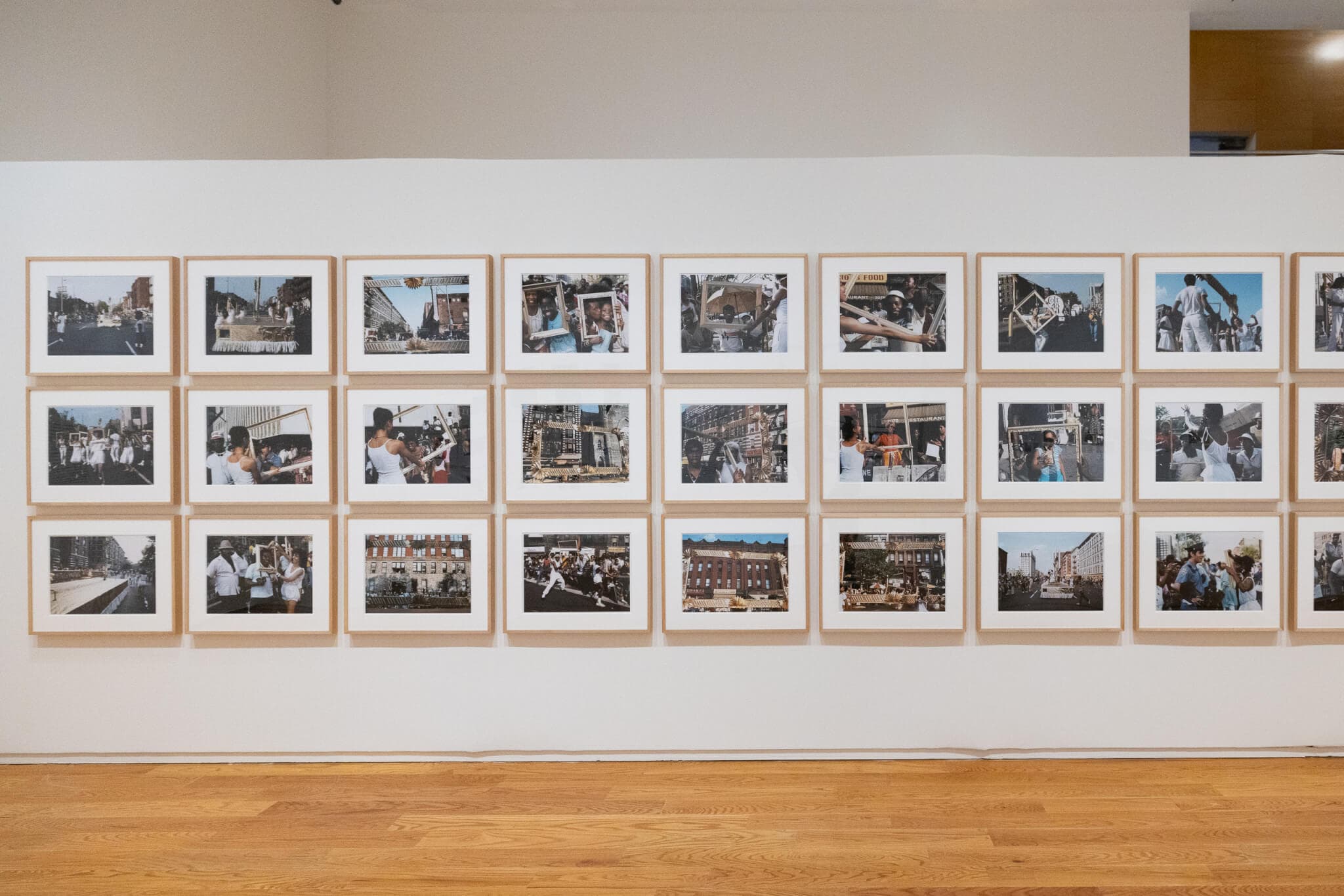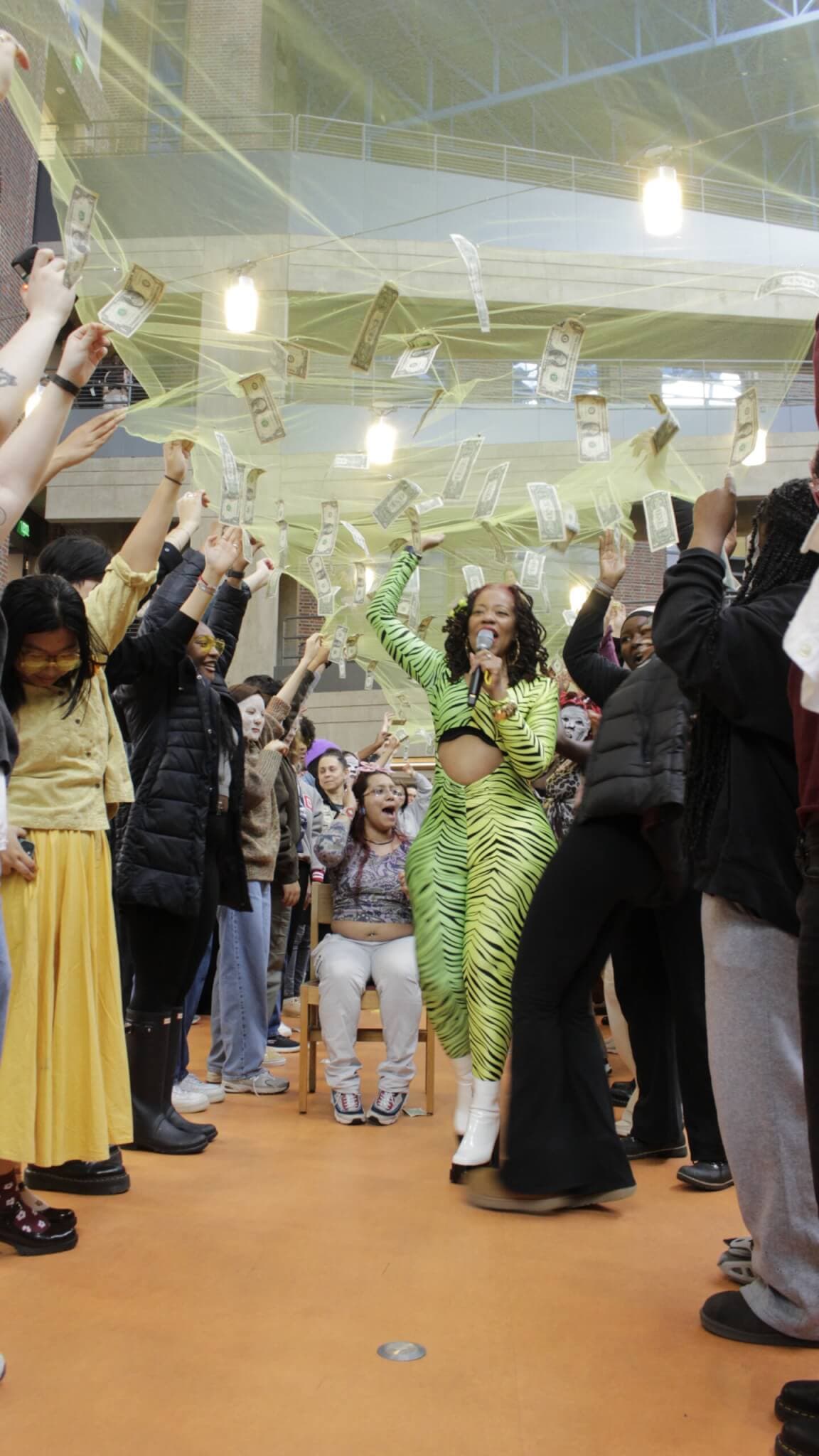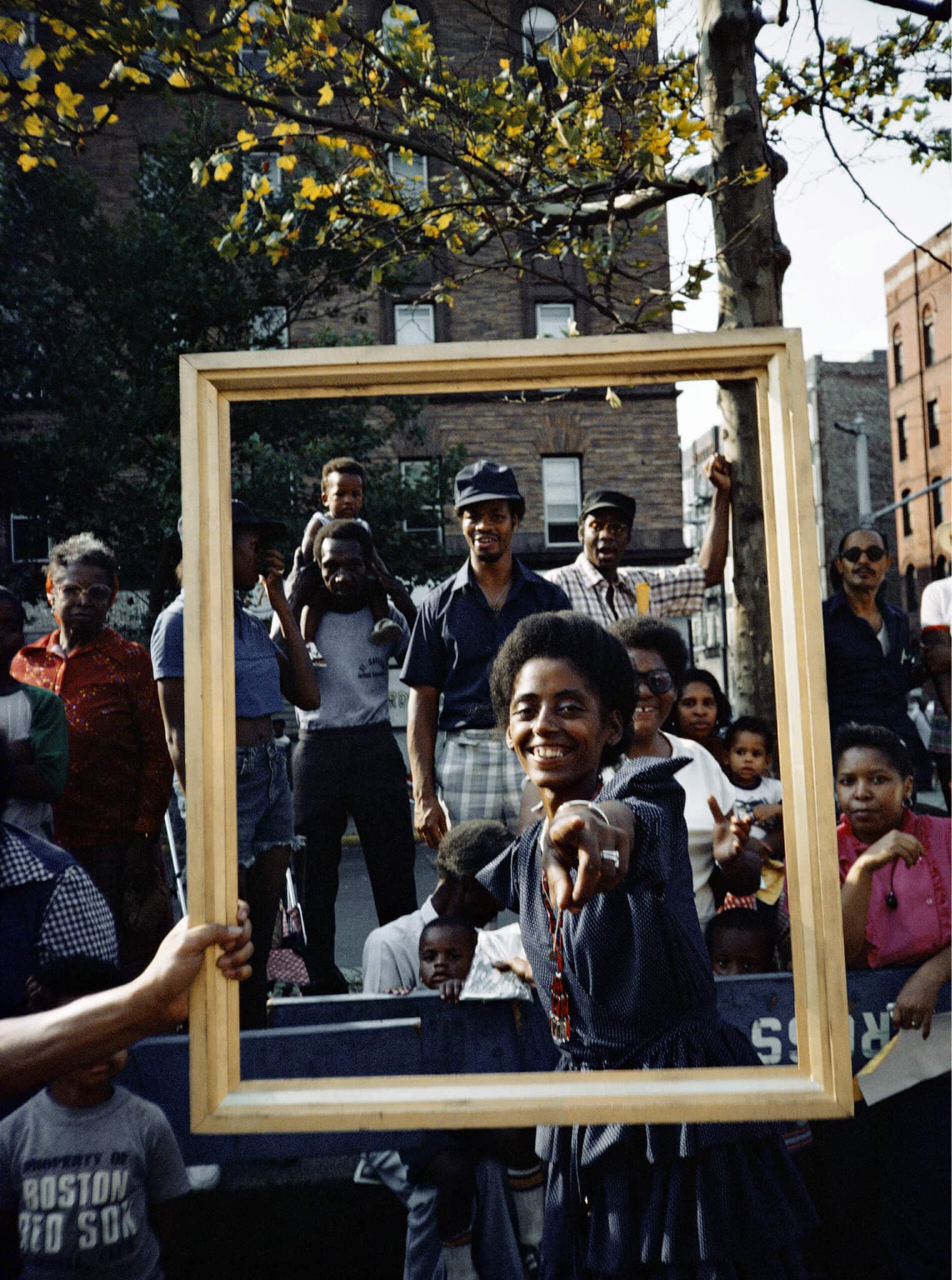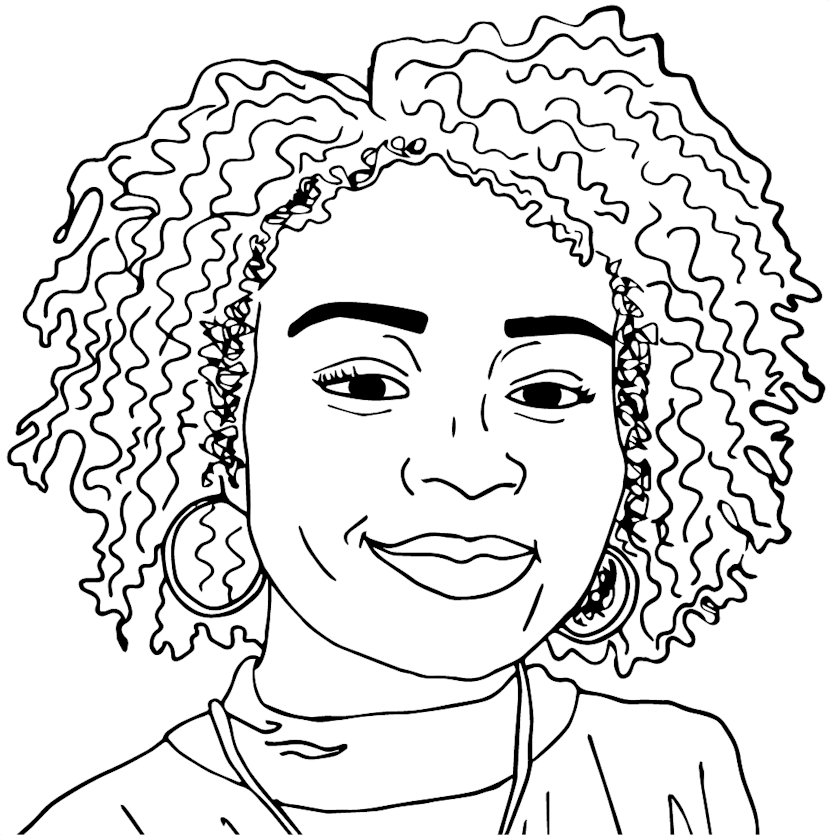A rock critic, an intelligence analyst for the US government, an instructor of literature, and a translator are just some of the paths Lorraine O’Grady explored between graduating from Wellesley College and becoming a leading conceptual artist working in photography, collage, and performance. Her work is devoted to consistently challenging restrictions imposed upon identity with regard to race, sex, gender, class, and national heritage. The first retrospective of her extensive career, “Lorraine O’Grady: Both/And” premiered at the Brooklyn Museum in 2021. Now on view at the Davis Museum, it is a thunderous homecoming.
Visitors weave through the lower-level galleries in sections to take in twelve bodies of work from O’Grady’s oeuvre across four decades. The galleries feel like a maze, with many of the walls reaching only partially to the ceiling. Vitrines display objects from O’Grady’s personal archive: one presents a small yellow cap with the white numbers “55,” marking the artist’s class year at Wellesley, next to yearbook photographs of her; others showcase letters to fellow conceptual artist Adrian Piper, drafts of project proposals, and performance scripts.
The title of the exhibition, “Both/And,” describes O’Grady’s commitment to the infinitely expansive spiral that results from embracing overlaps, shifts, and contradictions. This stands in opposition to the prevalent notion that either/or must be. Indeed, O’Grady’s life experiences have eroded expectations of her identity at every turn: born to Jamaican immigrants, she grew up middle class in New England; as a Black woman she attended one of the most elite colleges in the country; and after exploring numerous career paths, she found her way to the art world in her late forties. The resultant works of art offer a comprehensive model of understanding, one composed of nuance rather than mechanisms to mask it.
Miscegenated Family Album (1984) interprets the artist’s familial heritage. The series of sixteen Cibachrome diptychs center the visage of O’Grady’s late elder sister, Devonia, and images of sculptural representations of Nefertiti, Eighteenth Dynasty queen of ancient Egypt, both of whom the artist recognizes as relatives. O’Grady effectively bursts open the conventions of the family album, typically understood to take shape only after the invention of photography, and seldom including images of ancient relatives. Analog photography is robust within the show, but rarely in its traditional form. It becomes a means to bridge disparate epochs, document performances, and create material for collage.
One of the most intriguing elements of O’Grady’s practice is that she revisits and reworks her projects. Showcased in two separate sections of the gallery are the collage-poem series Cutting Out the New York Times (1977) and Cutting Out CONYT (2017). Initially, she set out to explore her innermost self using the language of the Sunday paper by maneuvering text cutouts into poetry. Forty years later, O’Grady reflected on the inherent limits of the public-facing language of the newspaper. She returned to the 1977 project and “cut out” even more, distilling the poems and embracing her works as historical objects subject to reflexive critique. In large font for the later project, O’Grady twists the typically taunting phrase “Come out, come out, / wherever you are” into a warm invitation to be true to yourself.
